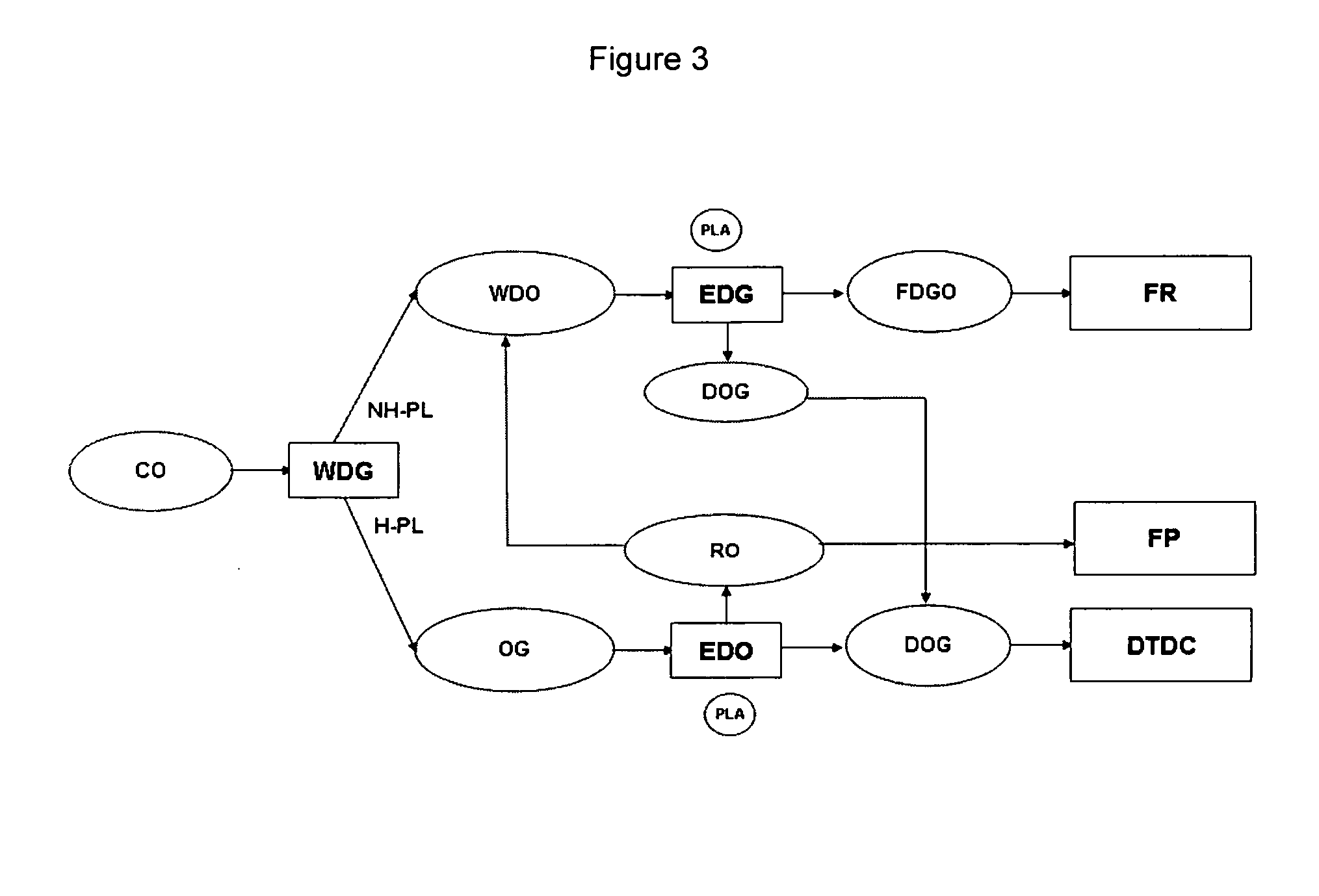Enzymatic oil recuperation process
a technology of enzymatic oil and oil recovery, which is applied in the field of enzymatic oil recovery process, can solve the problems of increasing the operating cost of this recovery process, requiring a considerable additional investment, and doubting if the savings resulting from the sale of recovered oil as crude oil will be large enough to cover these costs
- Summary
- Abstract
- Description
- Claims
- Application Information
AI Technical Summary
Benefits of technology
Problems solved by technology
Method used
Image
Examples
Embodiment Construction
[0019]The improved process according to the invention is particularly useful for oil mills that have to degum the crude oil they produce to ensure that it meets a sale specification and / or to prevent that the crude oil throws a deposit during transport or storage and that do not dry the ensuing gums to produce lecithin. Such oil mills normally dispose of the gums by incorporating them into the oilseed meal. However, since the pecuniary value per kilogram of meal is always lower than that of oil, there is a benefit in recuperating the oil from the gums and thereby selling less meal and more oil. In addition, the use of enzymes with phospholipase C activity causes the phospholipids to form diacylglycerols, which remain in the oily phase and are not removed during subsequent refining processes as opposed to the free fatty acids formed when phospholipases with A1, A2 or B activity are used. Therefore the oil recuperated by the process according to the invention has a high diacylglycerol...
PUM
| Property | Measurement | Unit |
|---|---|---|
| water content | aaaaa | aaaaa |
| temperature | aaaaa | aaaaa |
| temperature | aaaaa | aaaaa |
Abstract
Description
Claims
Application Information
 Login to View More
Login to View More - R&D
- Intellectual Property
- Life Sciences
- Materials
- Tech Scout
- Unparalleled Data Quality
- Higher Quality Content
- 60% Fewer Hallucinations
Browse by: Latest US Patents, China's latest patents, Technical Efficacy Thesaurus, Application Domain, Technology Topic, Popular Technical Reports.
© 2025 PatSnap. All rights reserved.Legal|Privacy policy|Modern Slavery Act Transparency Statement|Sitemap|About US| Contact US: help@patsnap.com



